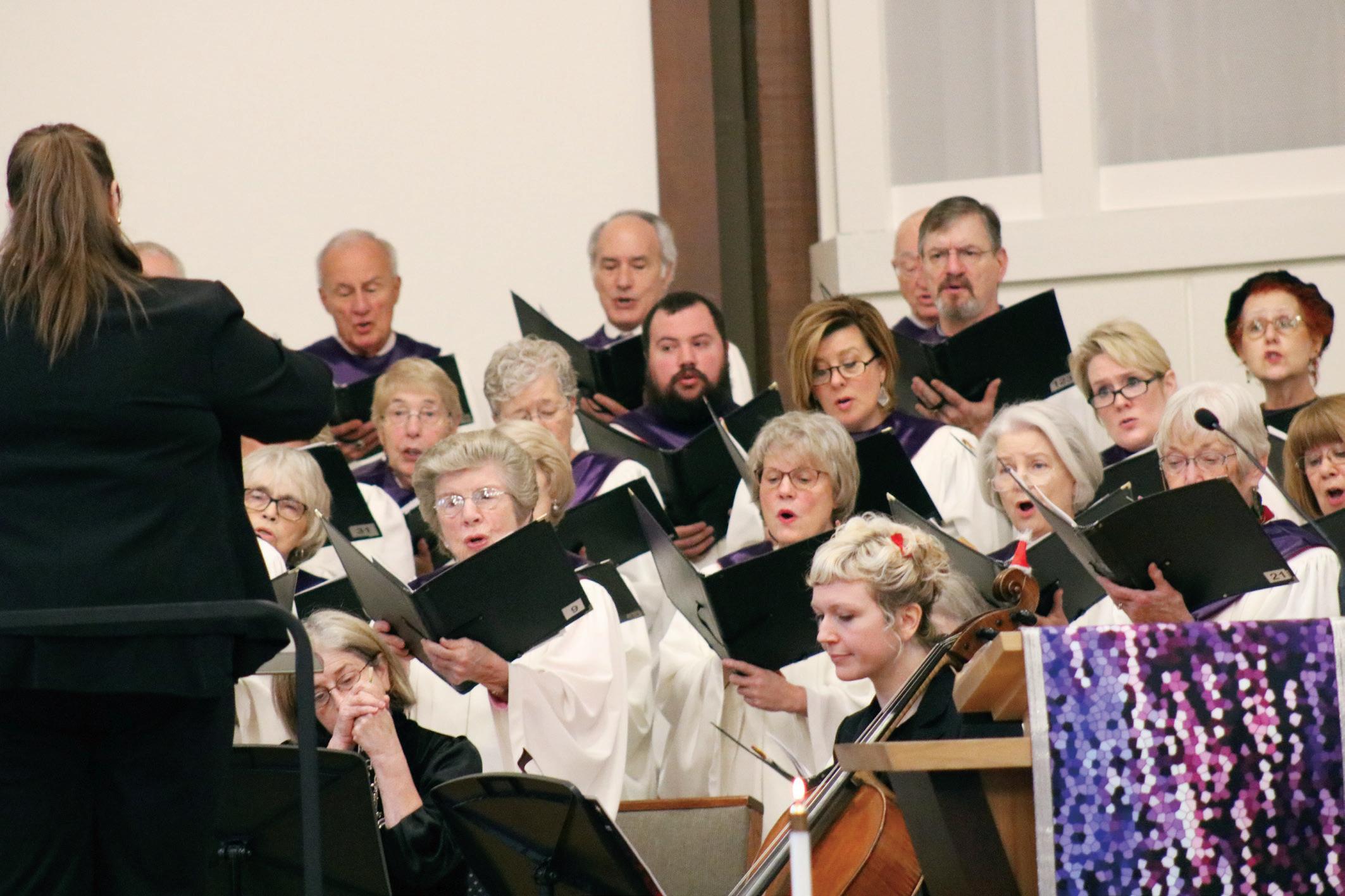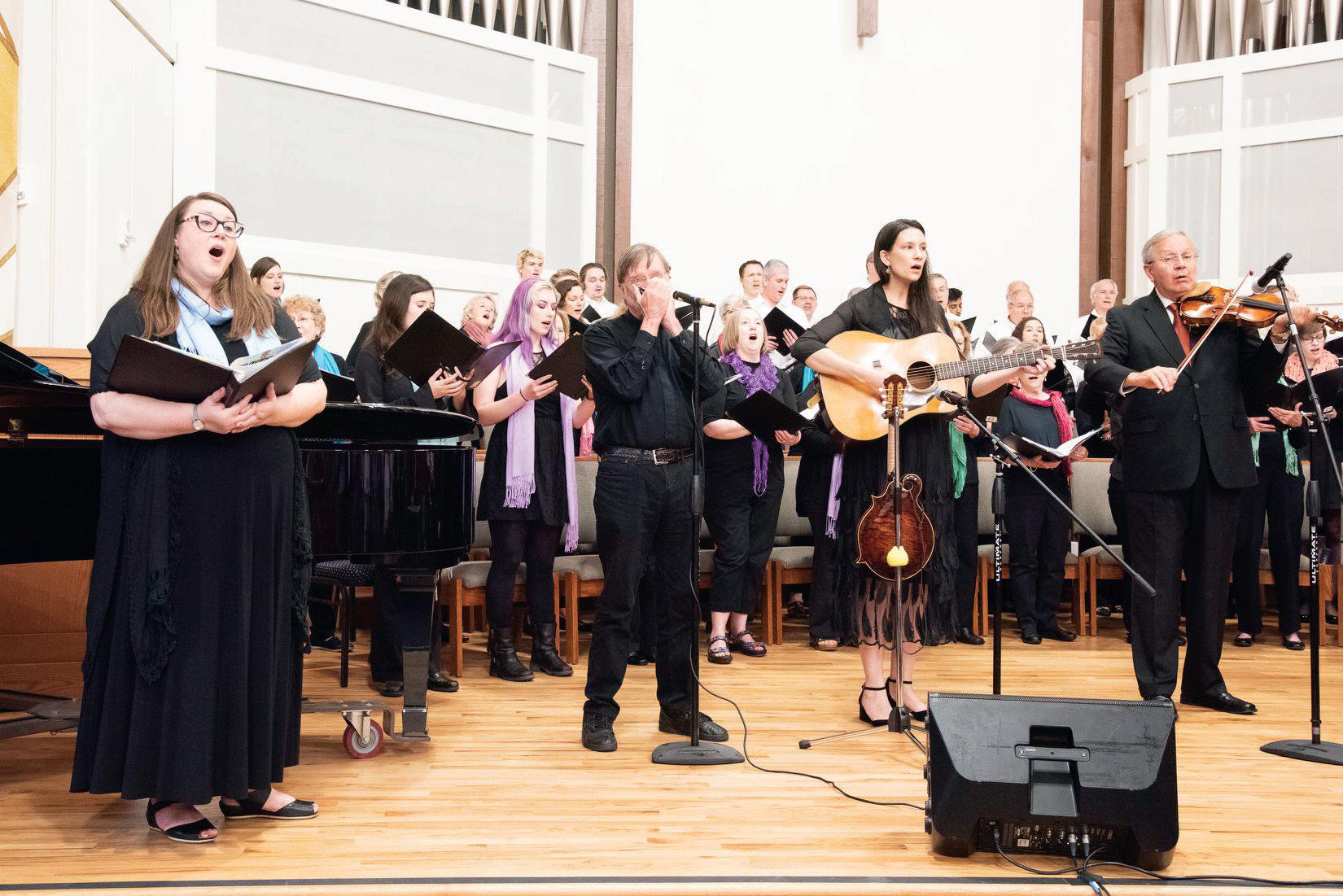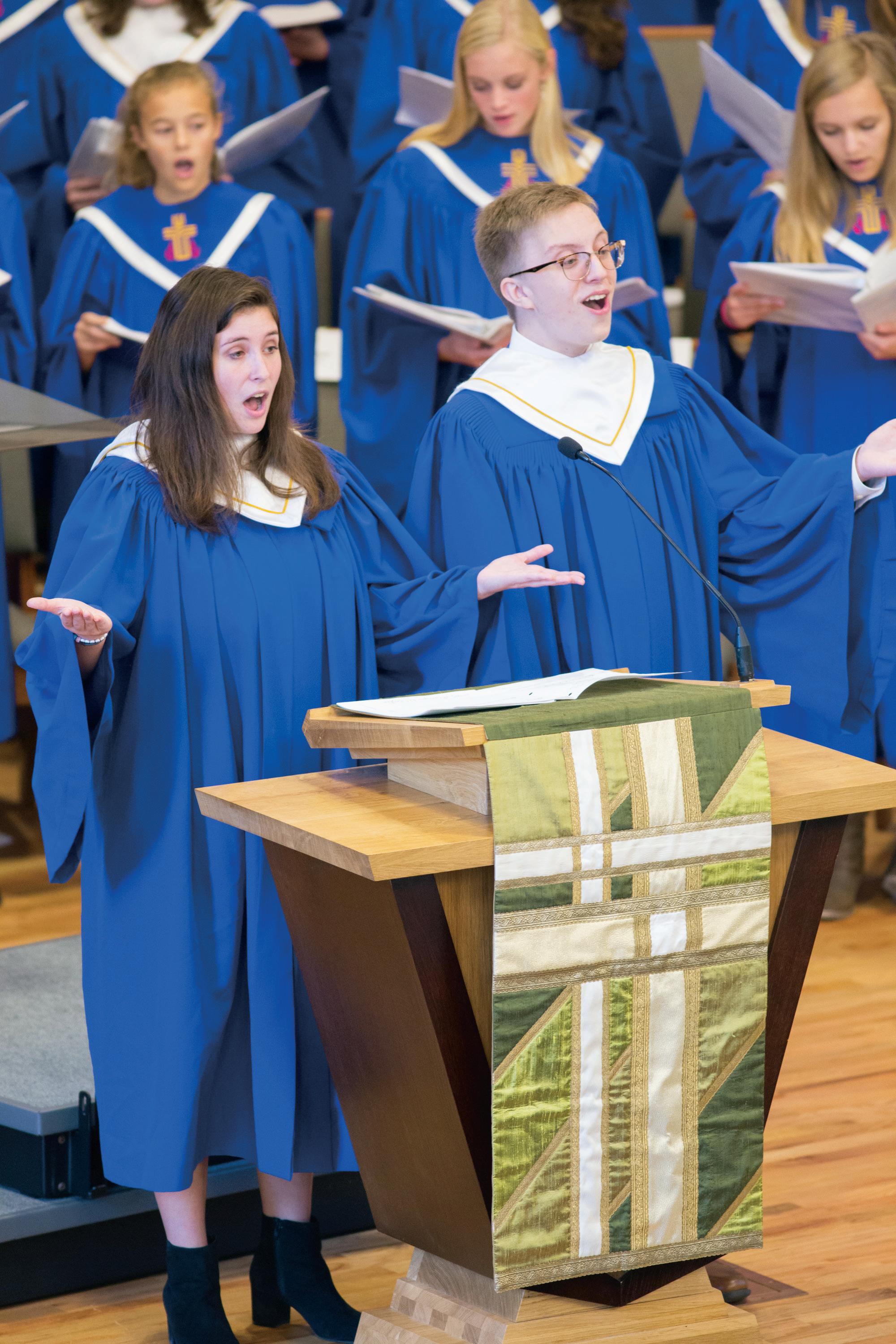
7 minute read
Rehearsal 101: Ideas for Rehearsing a Choir Virtually
Rehearsal 101: Ideas for Rehearsing a Choir Virtually
And some ideas that can be applied to in-person rehearsals, too!
BY EMILY FLOYD
When we began isolating in March, most of us had little to no experience rehearsing an ensemble online. The thought of convening a choir on a computer and singing while muted was completely foreign. By now, many of us have dipped our toes into leading virtual rehearsals. More than six months in, we face challenges still. It is hard to compete with Netflix and movie theatrics to which we have all become accustomed. During this time of social isolation, our students and adult singers are on their computers for the majority of the day, and choir online is just one more computer obligation adding to our screen fatigue. Without hearing the sounds of our fellow singers, are we still a choir? For many of us with years of experience, we feel as if we are first year choir directors again. It feels like a bait and switch, or certainly like we all have a new job description. One of the silver linings of this time is how the choral community has pulled together to share ideas and lift each other up. Perhaps a few of these ideas will help you along your way.
ARRANGE TO HAVE HELPERS IN THE REHEARSAL.
A wonderful stress reducer is to have helpers assist while you are teaching. We have already established that most of us have little experience teaching online. We need to focus fully on teaching, giving instructions, observing singers, and giving feedback. If possible, get an associate pastor for Youth/Children to partner with you, or ask a few choir members to fill the role of “co-host” to complete tasks such as muting singers, admitting newcomers/latecomers, and monitoring/ responding to the chat. You will be so grateful to teach without interruptions, and your volunteers or ministry partner will be so happy to contribute to the success of the rehearsal.
DELIVER A “CARE PACKAGE” OR A “CHOIR FOLDER/BOX” TO YOUR SINGERS.
Include any scores, tools/manipulatives, note of encouragement, treat, or odd item in a package to be delivered or picked up. When it’s time for choir, send out a reminder to your choir members to bring their materials to your online rehearsal. This builds excitement and enthusiasm, and it indicates to the choir that there is a plan! 8 | thechorister | December 2020/January 2021
PRACTICE, PRACTICE, PRACTICE!
If you are feeling unsure about virtual rehearsals in general or unsure about a particular aspect of your rehearsal plan, simply record yourself teaching. Tip: You can open a Zoom meeting by yourself and record it. If you are using a visual aid, practice using it “on camera” so it is effective on screen during your choir time. Meet with a friend to try it out. Try taping your printed lesson plan above your computer monitor or create a Power Point slideshow to help prompt your activities and transitions. Prepare written scores for a portion of the rehearsal (to be printed by singers ahead of time, to show on your screen, or to be included inside the athome packets). Anticipate problems and troubleshoot. Create routines and procedures which will give the rehearsal shape and order. Consider how you will execute echo singing or rote teaching. (Some ideas: echo with a “different” voice, use a puppet for the echo, or assign a student volunteer voice for the echo voice.) If you play video excerpts, can the participants hear the sound? You will feel more comfortable if you put in the time to do a trial run, and your rehearsal will be smooth sailing. If it doesn’t go smoothly, grant yourself the grace that we know everyone needs during this difficult time.

The Shallowford Chancel Choir and a professional orchestra perform to a full house in the "Sounds of Christmas" annual concert for community outreach.
REMEMBER THAT LESS IS MORE.
Short rehearsals help to combat screen fatigue. Short rehearsals keep choir members wanting “more.” Anything longer than 45 minutes gets uncomfortable in an online meeting or rehearsal.
PROVIDE VISUAL/TACTILE LEARNING RESOURCES.
TV shows, Netflix, movies — we can’t compete with the quality of their productions! We know that our society is becoming more and more visually oriented. Rehearsing on screen begs for some attention to be given regarding visuals to aid in teaching.
Some ideas:
PowerPoint slides to show a text, quote, a musical score, and to add color & images to the rehearsal
Puppets to stir imagination, wonder, and to aid in echo singing and execution of pure vowels
String to show phrasing lines or management of breath
Balls cut with a mouth to show vowels, or to bounce for the beat
Hoberman Sphere to show breathing
Straws to bring a fresh approach to vocalises
Flashcards for reading rhythms or melodies
Kazoos to bring fun/levity and to provide repetition in exploring pitch Tip: Practice using your visuals ahead of time so that it feels natural and easy during the lesson. Confidence is key.
KEEP THINGS FAST-PACED — INCLUDE QUICK TRANSITIONS.
Tom Shelton, Professor of Sacred Music at the Westminster Choir College of Rider University, was among the first of us to hit his stride teaching online. He suggests that fast-paced teaching and quick transitions are key to keeping our singers engaged. Many of us find that online rehearsals demand more planning than inperson ones. Organize your teaching materials so that you can pick them up easily and make fast transitions. Our muscles need “new memory” as we acclimate to teaching online.
INCREASE PARTICIPATORY OPPORTUNITIES FOR SINGERS.
Strive to use a variety of voices so that the rehearsal is more engaging. When writing your rehearsal plan, aim to use several voices — spoken and/or singing. Give equal opportunities to all students — not just the popular students or the oldest students. Spend the time to help your volunteers get comfortable with their assignments. As the rehearsal approaches, build in time to coordinate and prepare the volunteers prior to the rehearsal. (Some ideas for communicating with singers: you can Facetime with them, meet them on Zoom, send written materials, or make a video containing an example of the song.) The choir members will be enthusiastic to help, especially if you equip them for success. When the rehearsal concludes, follow up afterwards to let them know that you appreciate them. Affirmation helps to build relationships amongst your choir. Note: Be sure to set up a safe environment that allows individuals to be vulnerable to share their thoughts, to read passages, or to use their singing voices alone.

The Chancel Choir and the Chuck Nation Band perform "Come Away to the Skies: A High Lonesome Mass" by Tim Sharp and Wes Ramsay.

Two high school seniors stretch their worship leadership wings while leading the hymn, "We Are the Body of Christ."
GIVE FEEDBACK.
Ideally, choir rehearsals would be filled with chains called “1-2-3 Teaching Sequences” (Dr. Judy Bowers).
1-2-3 Teaching Sequences:
1. Teacher instruction 2. Student execution 3. Specific feedback These 1-2-3 chains make rehearsals pleasurable for the singers, and learning is maximized. Often, we directors fall short in giving feedback. Sometimes we offer feedback that isn’t specific enough, or we give feedback unrelated to the instruction we gave, and other times we get distracted and forget to give feedback at all. The loop is left incomplete. These tendencies are exacerbated when rehearsing online, particularly because we can’t hear singers making music while all participants are muted. (Tip: While they sing, study their responses and observe their physicality so that you can indeed give feedback. You might find it helpful to type up some phrases of specific feedback, so that those phrases are on the tip of your tongue.) Satisfaction is high when those “1-2-3 teaching sequences” are completed.
KNOW WHAT YOU ARE AIMING TO ACCOMPLISH.
Because everything is topsy-turvy, it’s hard to know what our goals are in this pandemic time. Our job descriptions have changed, and the choir’s role in the congregation has shifted (for now). As you approach planning for this choir season, it’s good to think deeply about what we are trying to accomplish in these virtual rehearsals. For me, it’s important to touch on each of the four pillars of choir (Randy Edwards).
THE FOUR PILLARS
1. Spiritual enrichment 2. Musical learning, growth, and expression 3. Emotional nurture 4. Social interaction By pulling together to share ideas and support one another, we can find innovative ways to nurture the spiritual and musical growth of children, youth, and adults.
Look for a new publication coming soon to help you plan virtual rehearsals for youth and adults. Release date: December 2020
CGBK84 HOW CAN WE KEEP FROM SINGING?
Ten Virtual Rehearsal Plans for Adult and Youth Choirs to Nurture Faith and Sing God's Praise by Emily Floyd
Each rehearsal plan includes: breathing exercises, vocalises, short songs, scripture readings and discussion questions, an anthem to support the scripture’s theme, interactive prayers, and a closing song. The rehearsals are designed for an online format but can be modified for in-person rehearsals as well.
Emily Floyd is a member of the Choristers Guild Institute Faculty and is Director of Music Ministries, Shallowford Presbyterian Church in Atlanta, GA.


